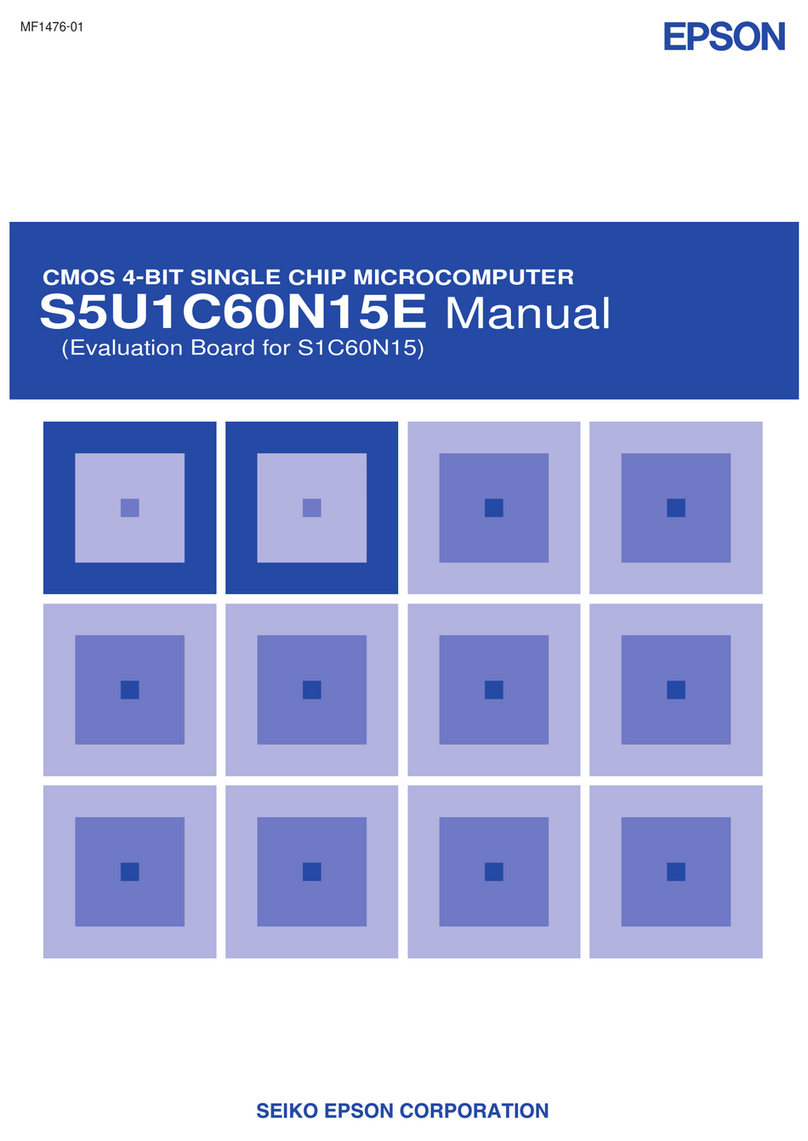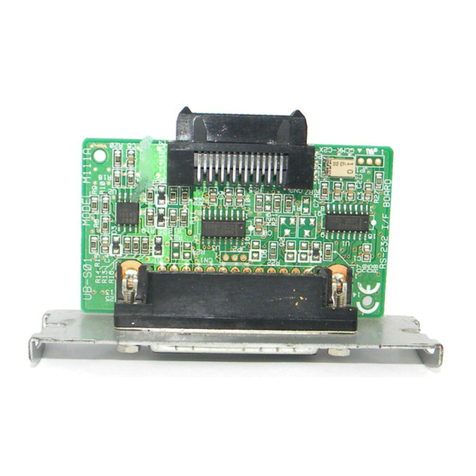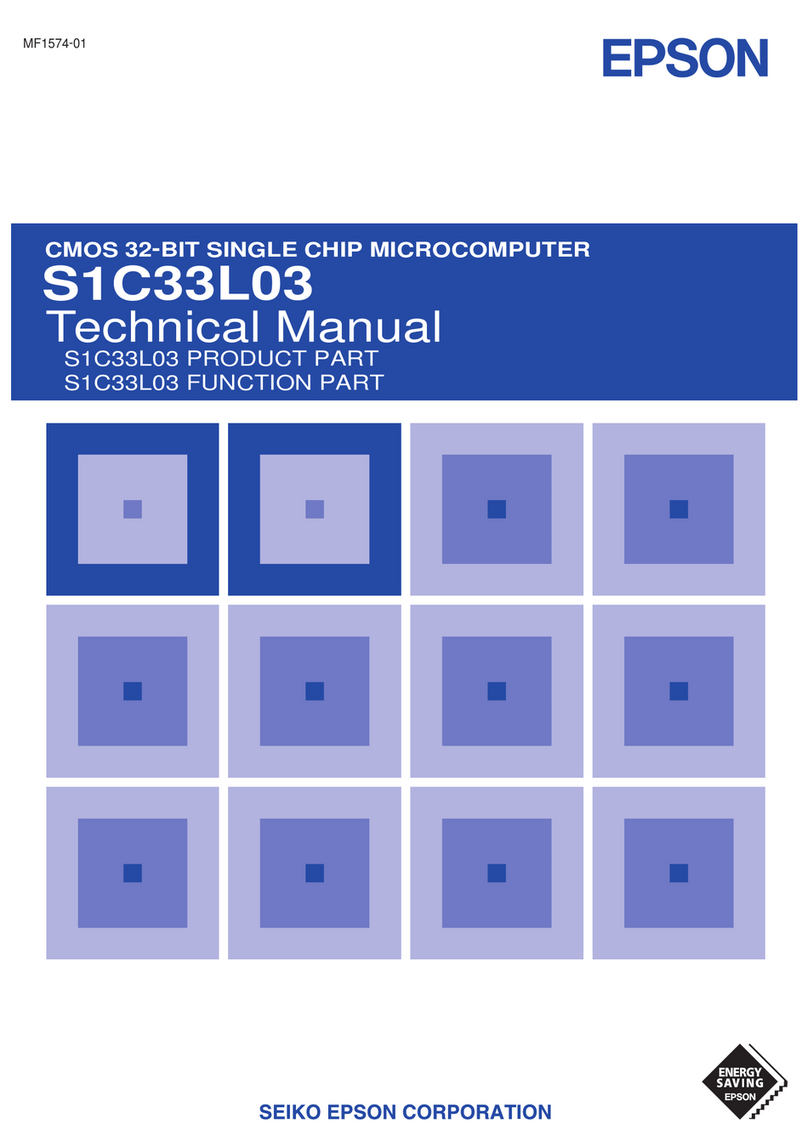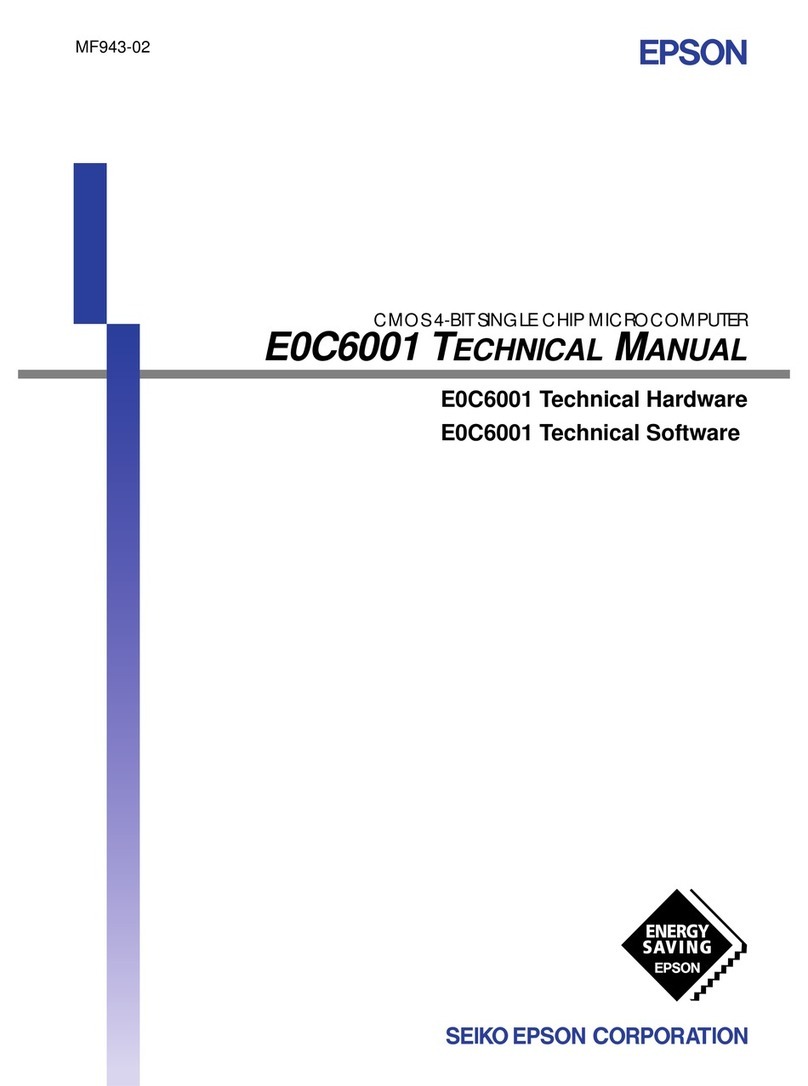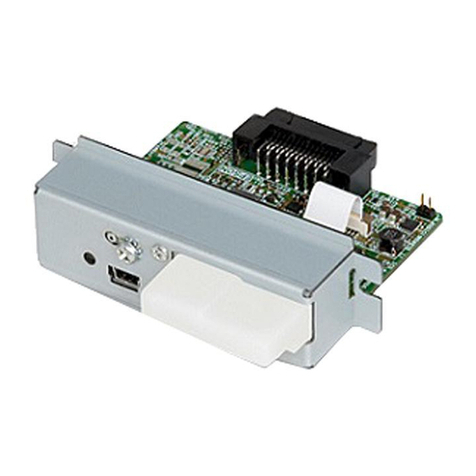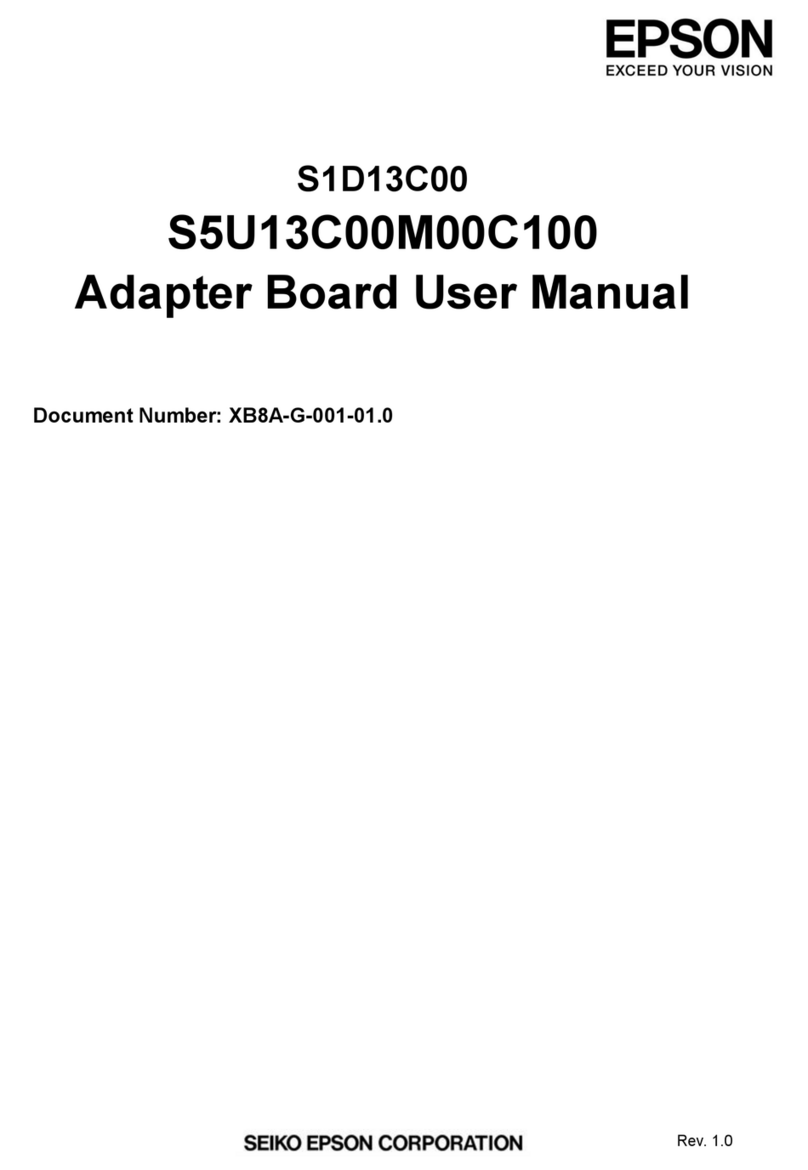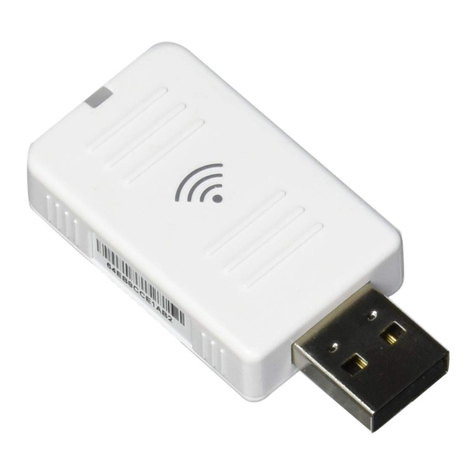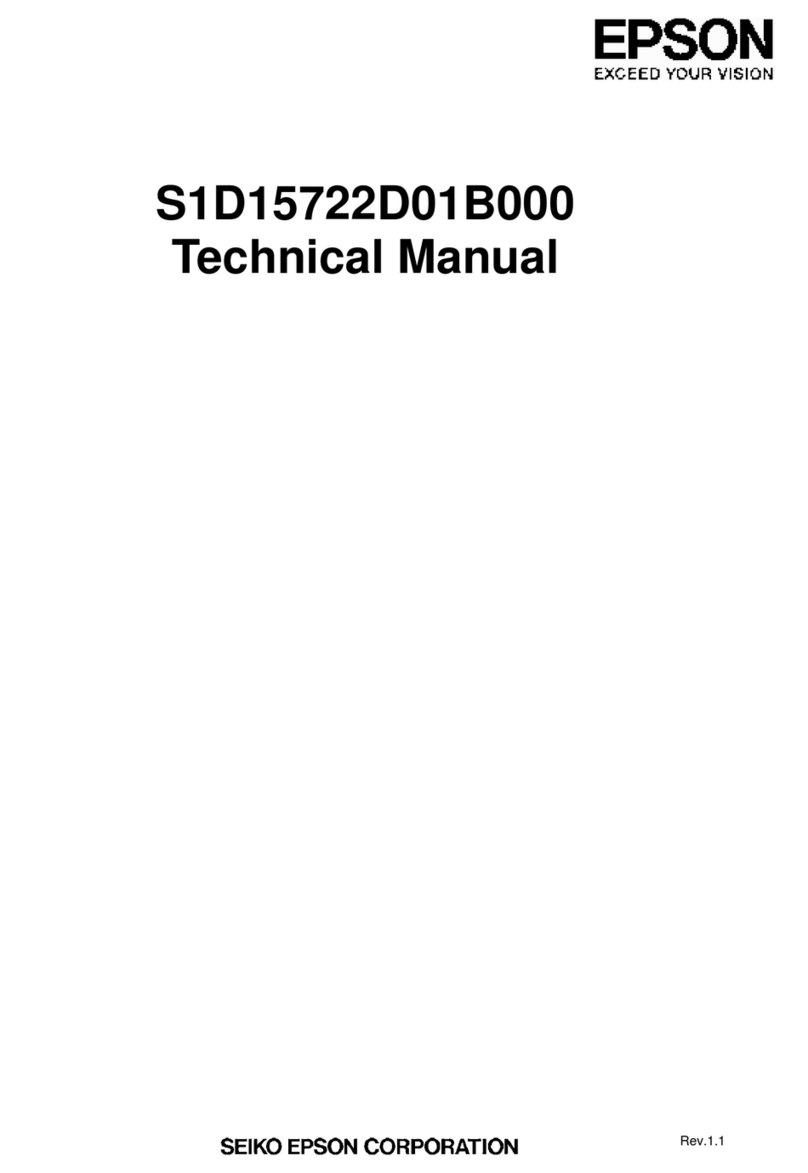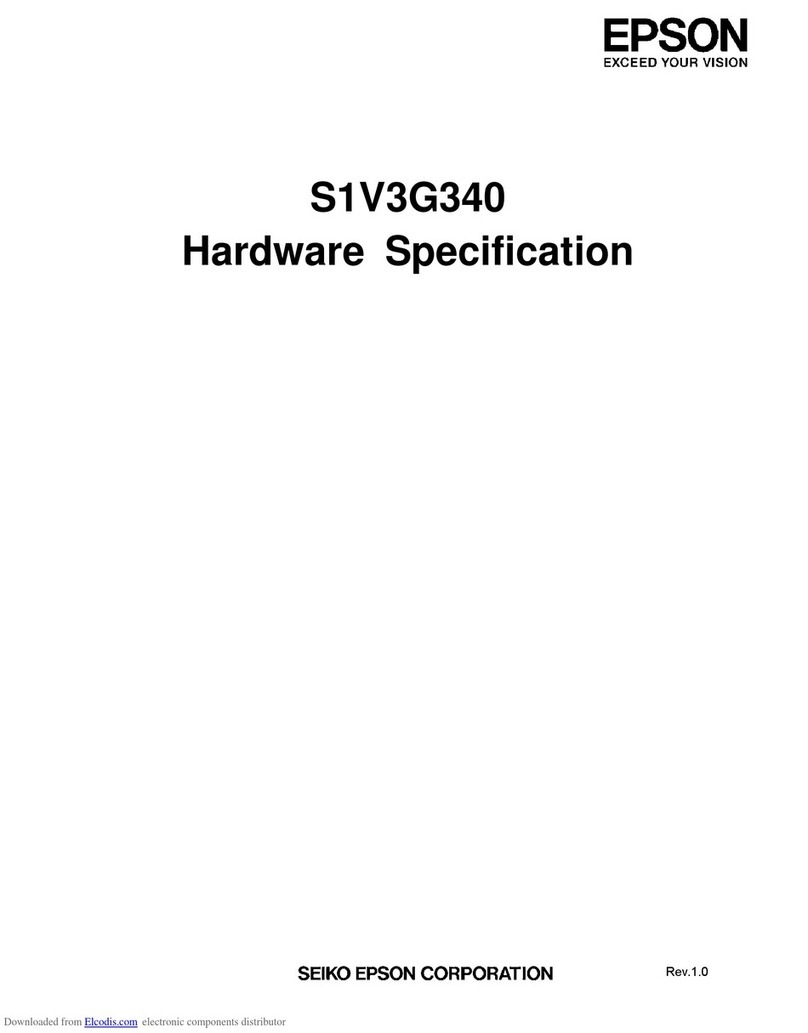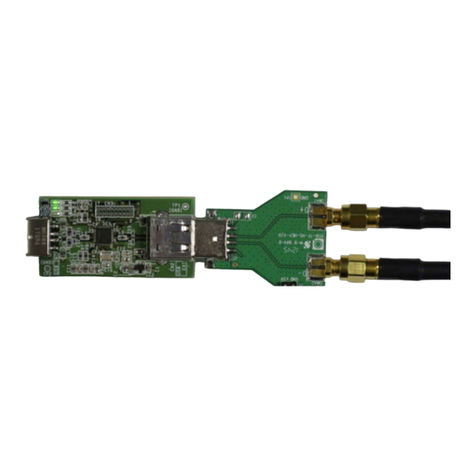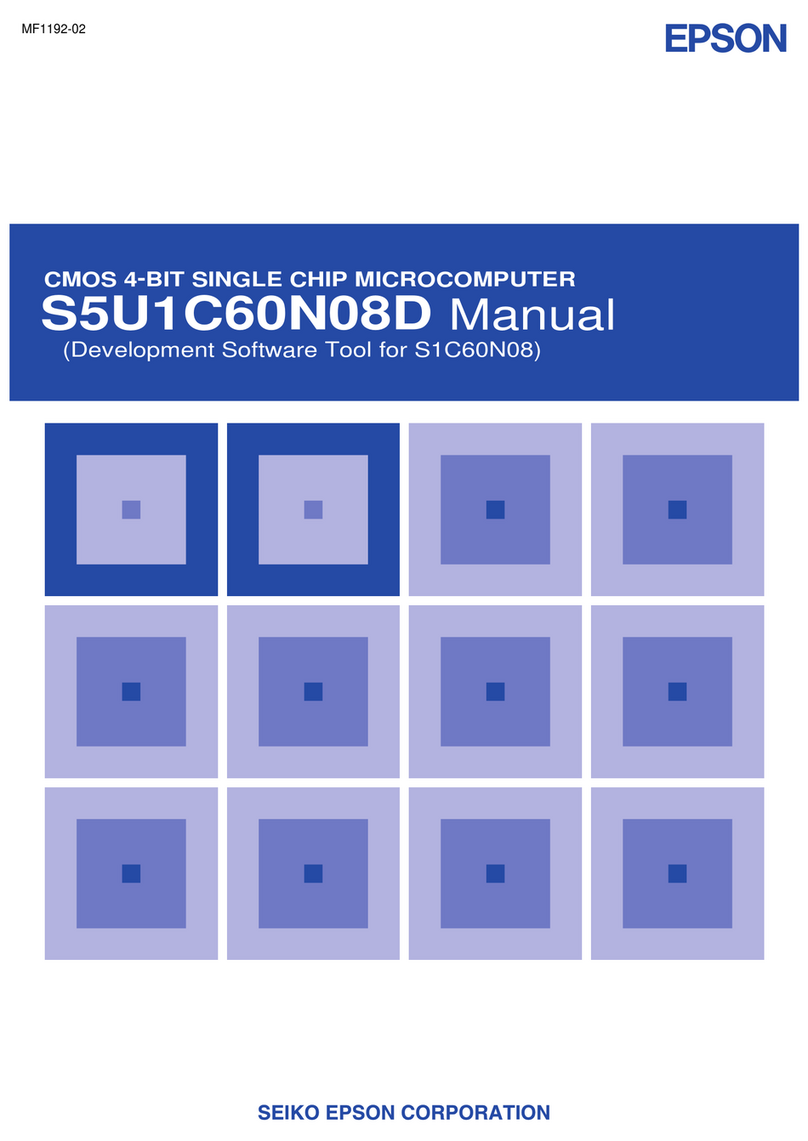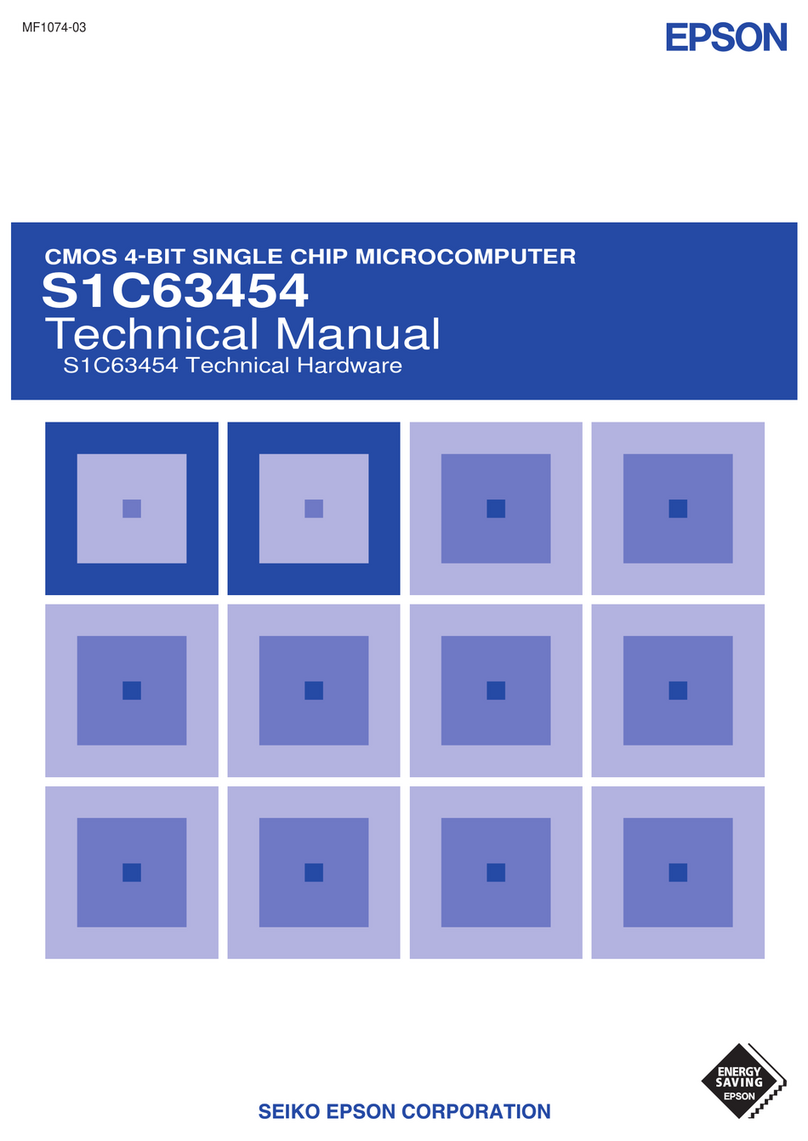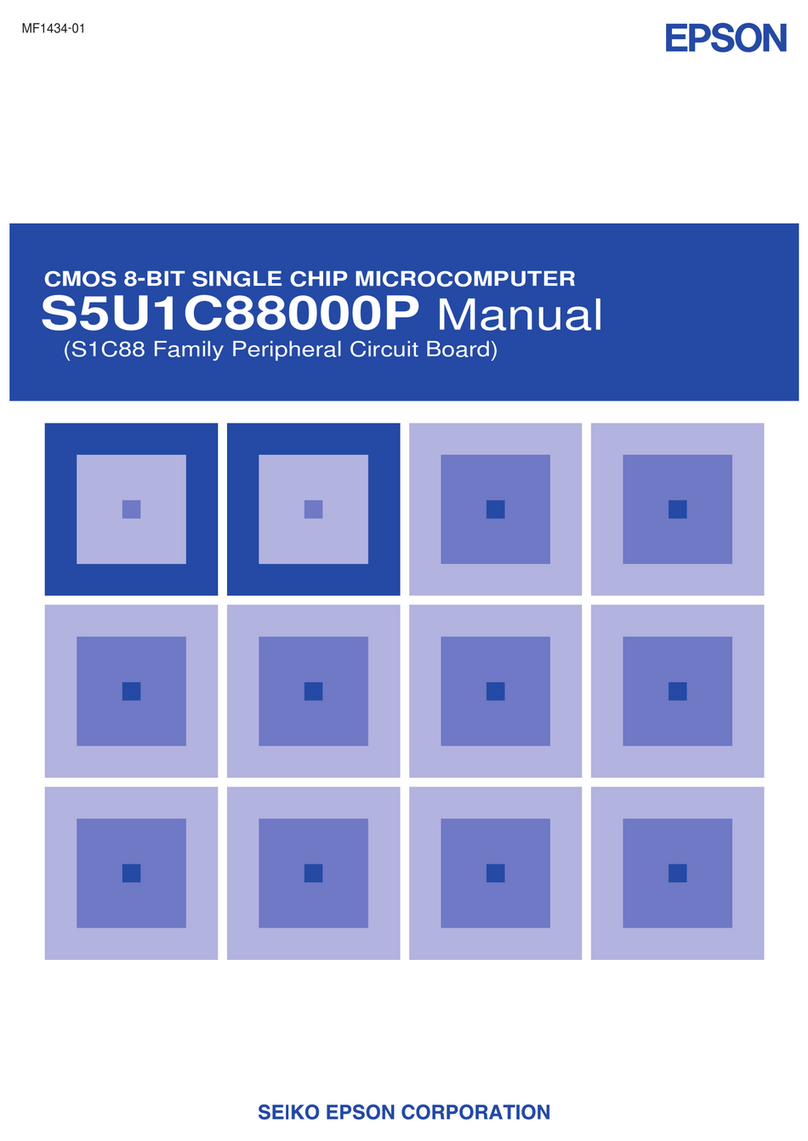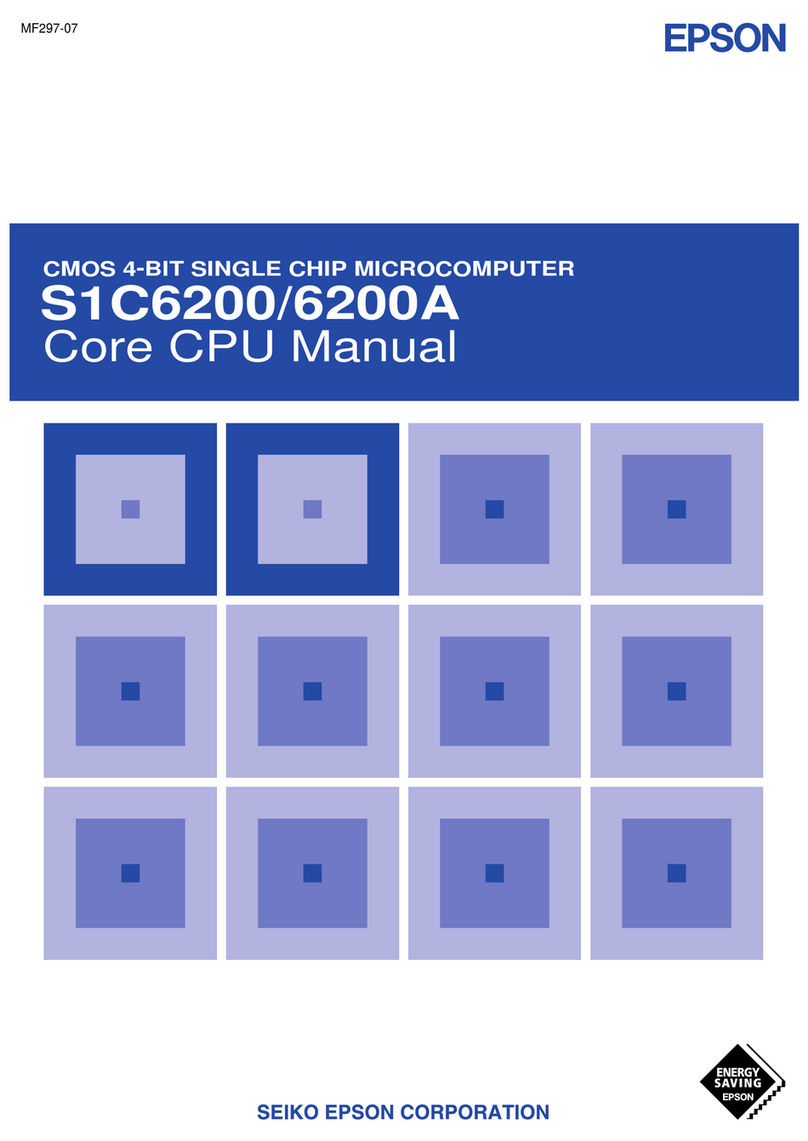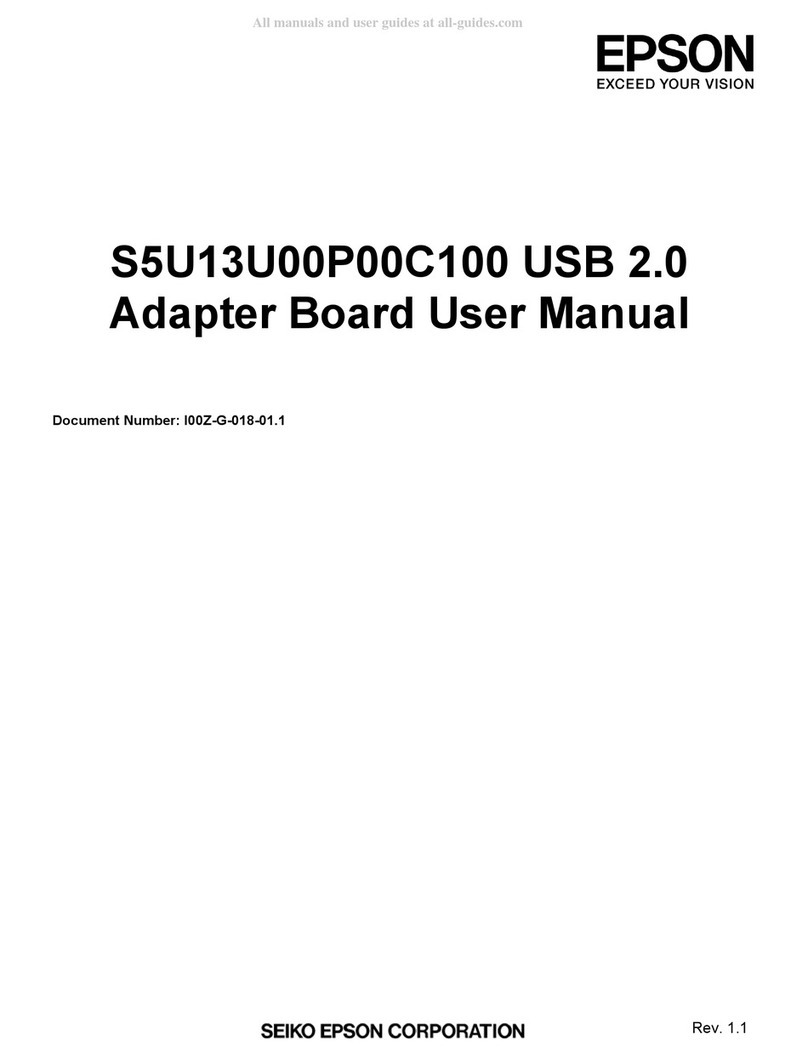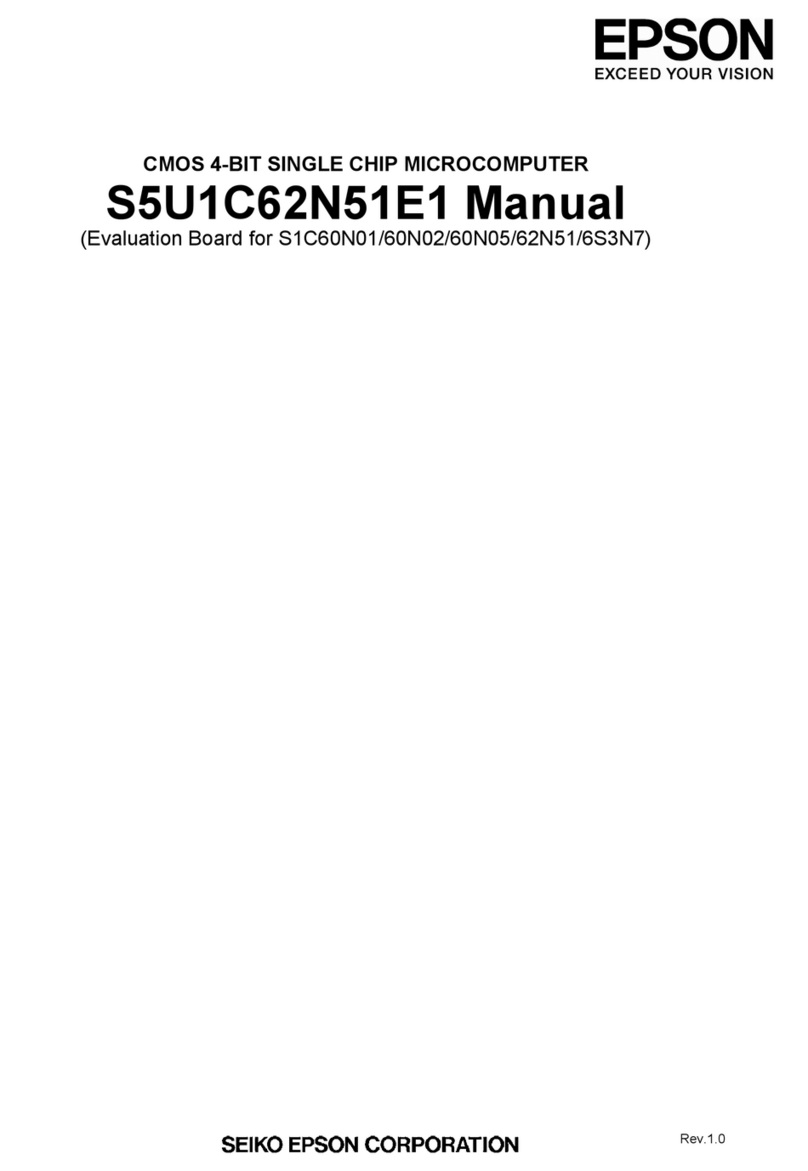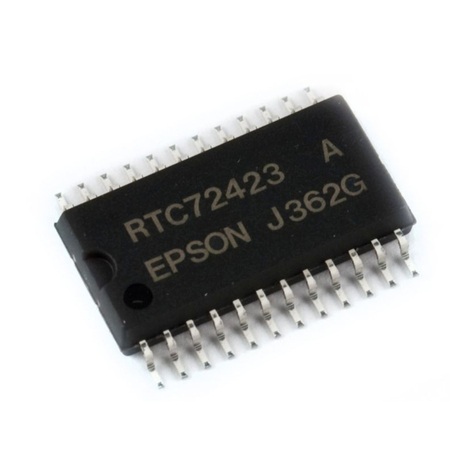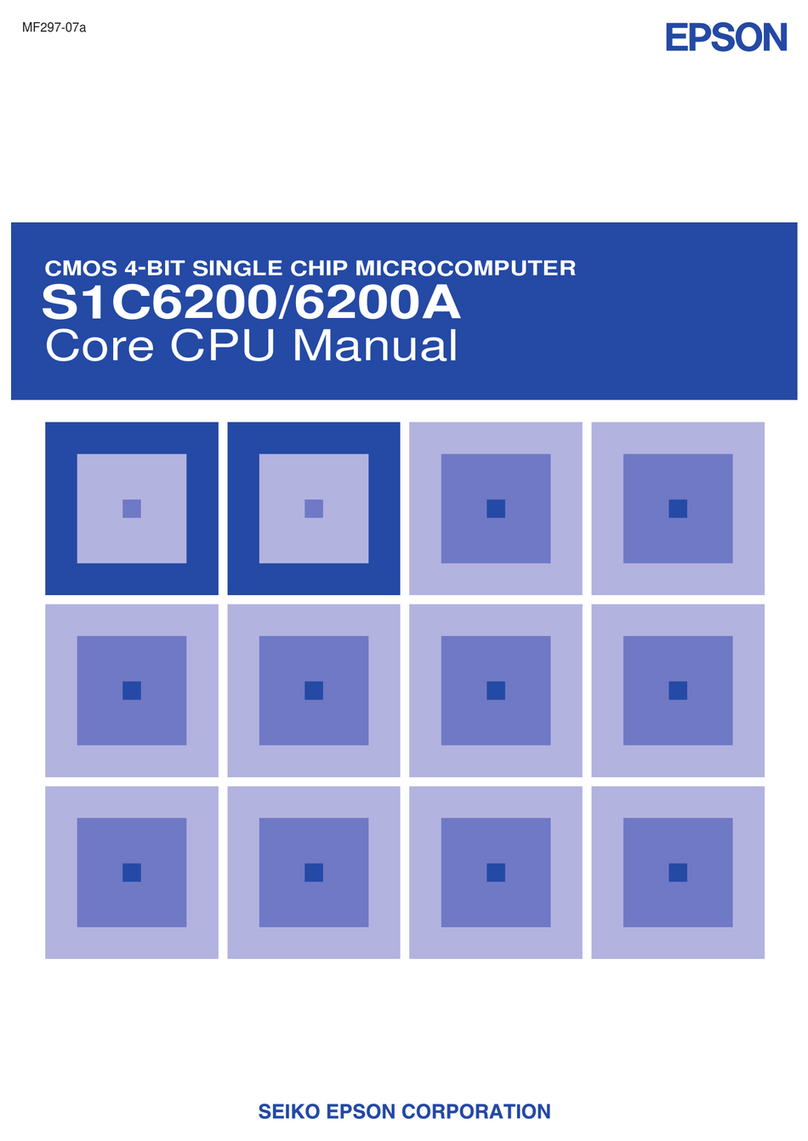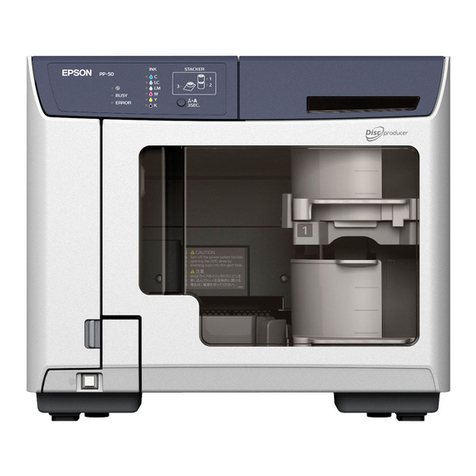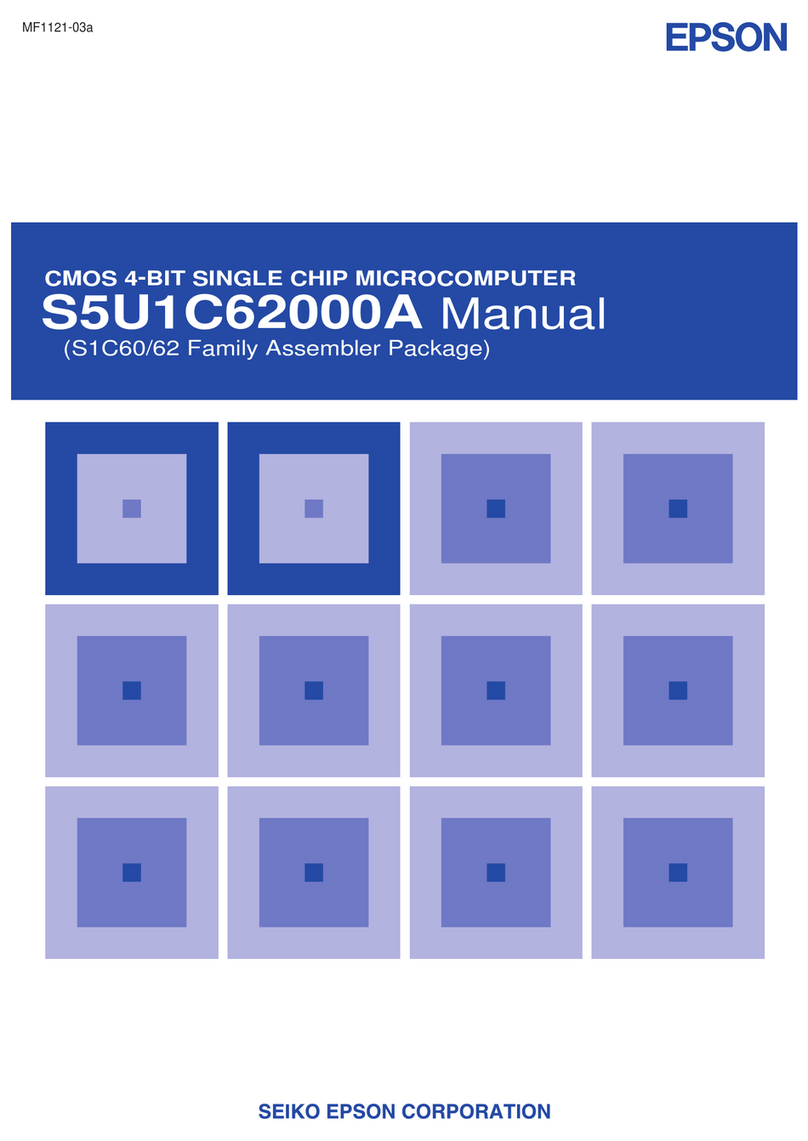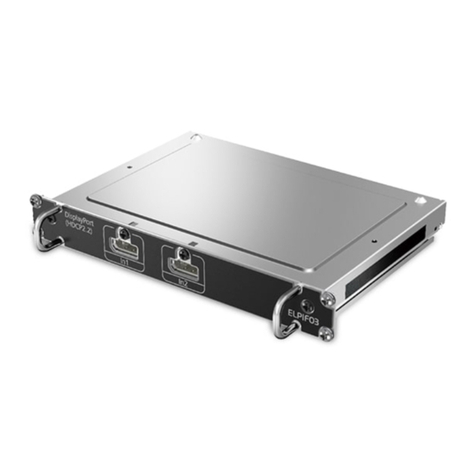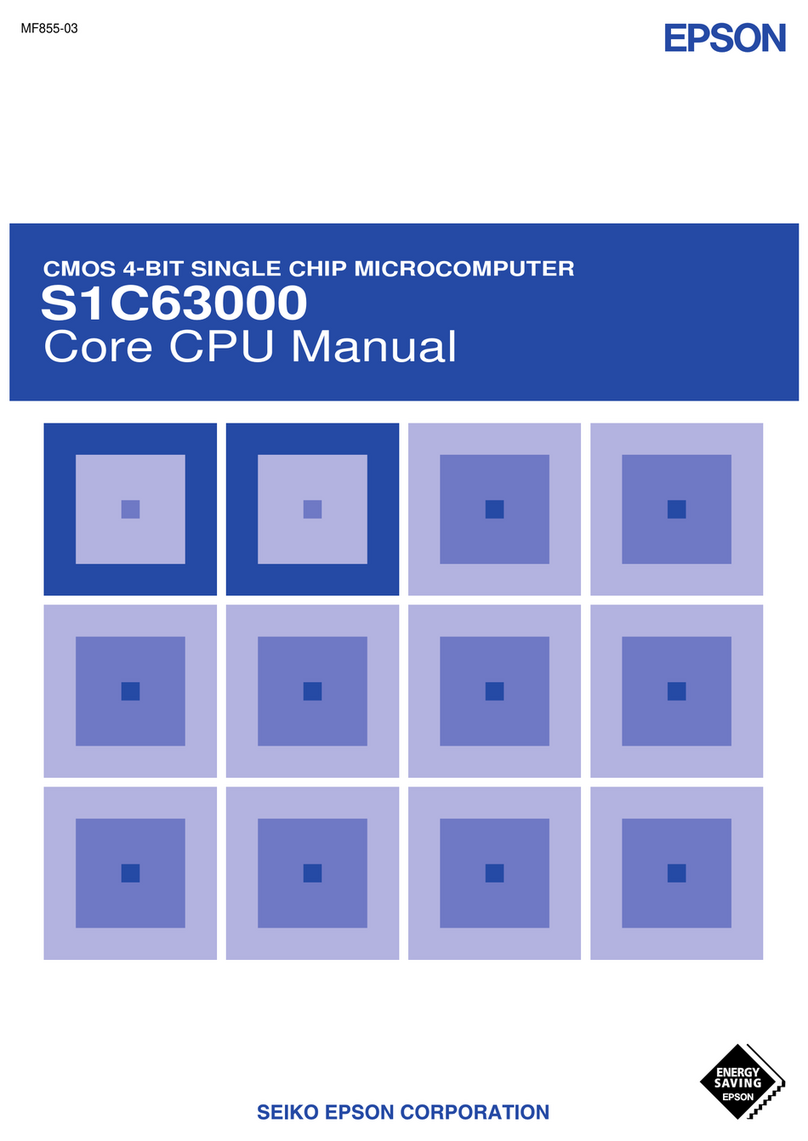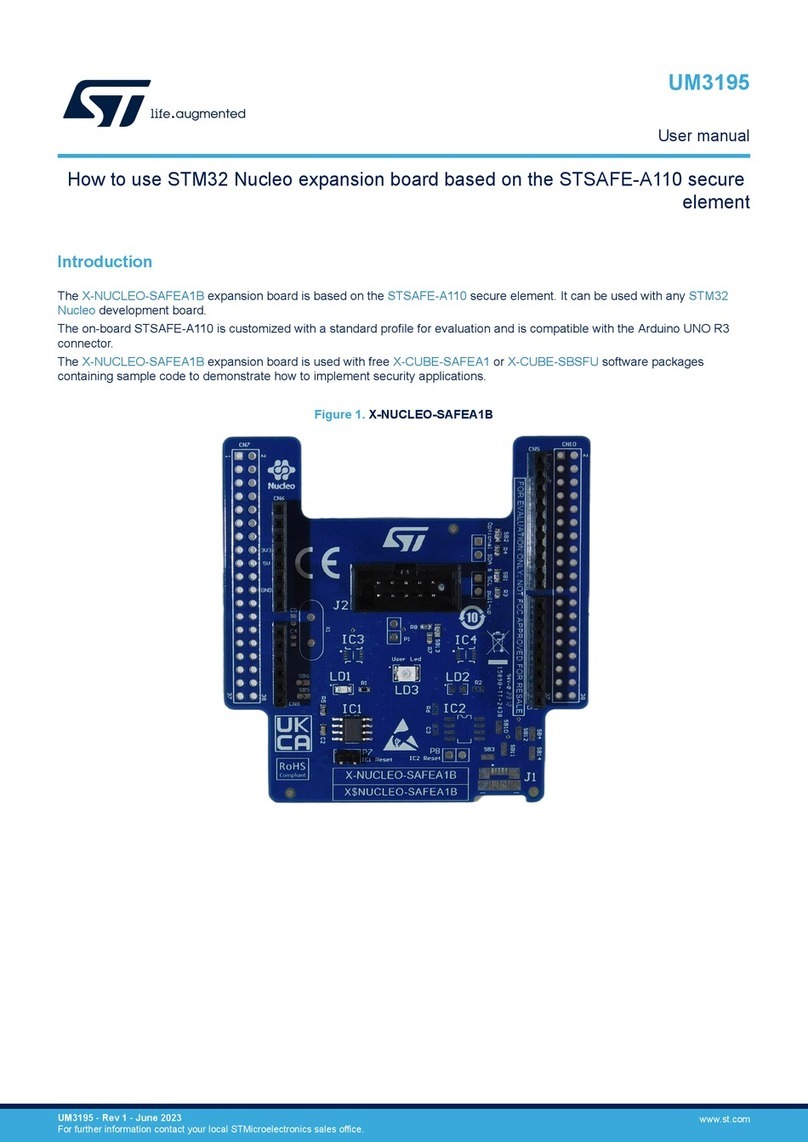
EPSON Endeavor L
power
(SPEED)
hard disk diskette
power
light
accesslight drive
button
Memory
bay for hard disk, diskette drive,
CD-ROM drive, tape drive, or other
option card slots
Video RAM
ROM
Shadow RAM
Cache
Math
coprocessor
Computer Specifications
Clock/calendar
CPU and Memory
32-bit CPU Intel 486SX, DX, or DX2 processor
upgradable to faster, more powerful
processors, including SX2, DX4, or
Pentium OverDrive processors; DX4
processors require an adapter board to
regulate voltage
Energy Star Low power consumption, Energy Star
compliant in base configurations
(consumes less than 30 Watts)
System speed Fast and slow processor speeds available;
fast speed is the speed of your processor
and slow speed is 8 MHz; 0 wait state
memory access at fast speed
Press Ctrl, Alt, and - to select slow speed or
Ctrl, Alt, and + to select fast speed (use the
- or + on the numeric keypad); default
system speed selectable through SETUP
Controllers
Video
Diskette
Hard disk
Interfaces
Monitor
ISA bus speed for all processors is
8.3 MHz; local bus video speed reflects the
speed of the processor; at fast speed,
DX2/50 and DX2/66 processors run
internally at 50 and 66 MHz, but run
externally at 25 and 33 MHz; local bus
speeds for DX/2 processors are 25 and
33 MHz respectively
4MB RAM standard on system board;
expandable to 36MB using 1MB, 4MB, and
16MB SIMMs; SIMMs must be 72-pin,
32-bit or 36-bit, fast-page mode type with
an access speed of 70ns
128KB system and video BIOS and SETUP
code located in EPROM on main system
board
512KB or 1MB DRAM standard on main
system board; 512KB expandable to 1MB
using a 256 x 16-bit, 40-pin SOJ DRAM
chip
Supports shadowing of system and video
BIOS ROM into RAM
8KB of internal cache on processor;
supports 32KB, 64KB, 128KB, or 256KB of
external cache using 28-pin, 8 x 8, 20ns
DIP chips or 28-pin, 32 x 8, 20ns DIP chips
and 28-pin, 32
x
8, 15ns tag chips
For SX-based systems, can install an
80487SX processor with math coprocessor
support; math coprocessor built into
DX-based and Pentium OverDrive
processors
Real-time clock, calendar, and CMOS
RAM socketed on main system board with
external 3.6V battery backup
Cirrus Logic CD5428 high speed super
VGA local bus on-board controller with
True Color support
Controller on main system board supports
up to two diskette drives or one diskette
drive and one tape drive
Interface on main system board supports
up to two IDE hard disk drives with
built-in controller
Local bus SVGA interface for fixed or
multi-frequency monitor built into system
board; 15-pin, D-shell connector
3/94 EPSON Endeavor L - 1

